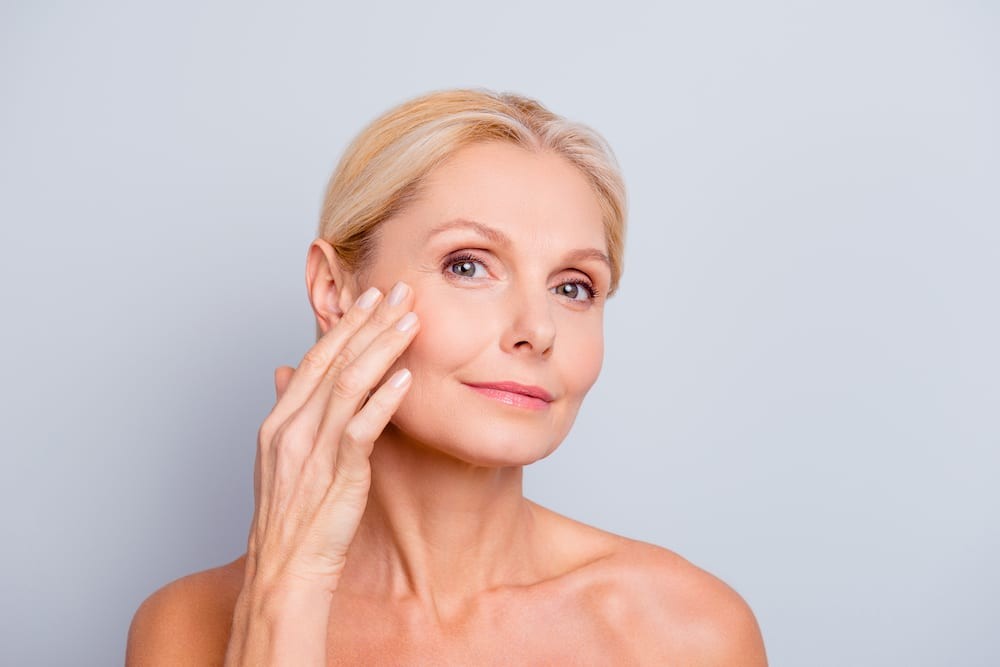
If you are seriously considering investing your time and financial resources in a facelift procedure, you probably have many questions and one or two crucial concerns — among them, how long will my facelift results last? The results of any surgery are of the highest importance, and the same is true of a facelift procedure. This is especially so when considering a facelift because there are many safe and effective alternatives to this facial rejuvenation procedure, including non-surgical solutions such as the Lickstein Lift®, individual injectables, and laser treatments, as well as more limited surgical options such as the mini facelift or brow lift.
However, while all of the above alternatives provide some level of rejuvenation for mild or early-onset symptoms, if you have more severe symptoms, a facelift will give you the most rejuvenation and the longest-lasting results. However, it is important to understand the limits of what a facelift can achieve, also. Nothing can stop the march of time and the process of aging, but a facelift — combined with a healthy lifestyle and common-sense precautions — can restore years to your looks and provide you with a natural and attractive result that requires no on-going treatments.
Understanding the Aging Process
As we age, our skin will undergo many changes, and these changes will be especially prevalent and visible in the more delicate skin of our faces. One natural occurrence as we age is the decreased production of collagen and elastin. These two compounds sustain many important characteristics that we associate with young and vibrant skin.
Collagen contributes to the underlying structure of the skin, which leads to firmer skin and healthier skin tone; it also helps the skin stay hydrated by attracting water. Elastin promotes healthy skin elasticity and also contributes to healthy skin tone. As the prevalence of these compounds decreases over time, so, too, do the qualities which contribute to making the youthful skin we want possible.
Another change that occurs over time is the loss of facial fat. Facial fat contributes to a healthy, youthful volumization in the face which also helps minimize the appearance of finer lines and wrinkles. As this fat begins to disappear, our skin may start to sag and droop, due to the loss of its former volume, and lines may begin to appear more prominent as a result. The loss of collagen, elastin and facial fat over time is entirely natural, and while some procedures can help mitigate the decrease of both, you may still experience unwanted symptoms.
What a Facelift Does
Unlike neocollagenesis procedures which help to boost your skin’s production of collagen and elastin — with short-lived results — a facelift focuses on improving the most prominent symptoms of facial aging in the most substantive way possible so that individuals can enjoy much longer and more dramatic results. A facelift may include many features, but the hallmark of this procedure is the lifting and repositioning of the superficial musculo-aponeurotic system, or SMAS, the muscles and tissues which make up the foundation of one’s facial structure.
Repositioning the muscles and overlying skin can eliminate many features of facial aging by reversing sagging and smoothing wrinkled skin. In addition, a facelift will also excise loose skin, further smoothing the face and improving skin tone. Facial fat transfers, another technique which can augment and maximize the results of a facelift, can restore lost facial fat and volume and offer further rejuvenation. Whether or not you have a facial fat transfer, a facelift can provide the most substantial rejuvenation, in comparison to other procedures, by eliminating facial aging symptoms which other techniques only improve.
Does a facelift stop aging?
As discussed above, many factors which occur naturally as we age contribute to facial aging symptoms, notably, loss of collagen, elastin and facial fat. Gravity, too, plays a significant role in the extenuation and drooping of delicate facial skin over time. No medical procedure can overcome gravity, and while some procedures can temporarily increase collagen and elastin in the skin, they cannot do so permanently. Lifestyle factors can also improve and sustain the appearance of healthy looking skin, but no diet can permanently alter or reverse aging or aging symptoms, either. While aging itself cannot be stopped, its symptoms can reliably be controlled with anywhere from moderate to excellent results.
The Results You Can Expect From Your Facelift
Because a facelift augments the appearance of the face at a much deeper level than treatments which only affect the quality of the skin at a superficial level, you can naturally look years younger after a facelift and enjoy those benefits for many years into the future. Because so many factors affect the rate at which you age, however — including hereditary factors, climate and sun exposure and diet, just to name a few — it is difficult to estimate how long results will last during a consultation and from individual-to-individual.
One way to gauge how long the results of a facelift will last for a typical patient, though, is the follow-up rate of individuals who have had a facelift. While this is not the most reliable metric, since beneficiaries of a facelift may not need or want an additional procedure, it can provide some information on the length of results. On average, individuals who have had a facelift do not generally seek a revision surgery until 10 years or more after their surgery, with some patients considering a revision only after 15 years. While imperfect, these estimates can attest to the effectiveness and the value of a facelift over other facial rejuvenation procedures.
Schedule your facelift consultation with Dr. Lickstein now!
Call Dr. Lickstein today to schedule an in-person consultation for your facelift procedure today. You can reach our conveniently situated Palm Beach Gardens office at 561-571-4000.





